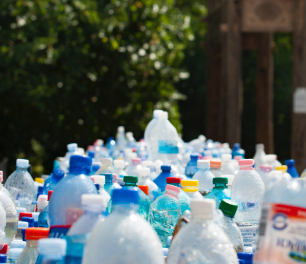NIAS Screening & Risk Assessment for Food Contact Materials
Based on EN 13130, Analysis by GC-MS, then followed by a toxicology risk assessment, our experts will help you to identify and mitigate the risk associated with non-intentionally added substances in your food contact material or article.
Plastics are one of the most commonly used materials in food contact products. As recycled plastic is becoming more relevant for manufacturers, consumers now demand sustainability in the products and packaging they buy. At the same time, governments are starting to address the problems of the linear economy, and this means food contact plastics will need to be reusable and recyclable if we are to achieve a truly circular economy.
However, safety remains a vital concern. Many jurisdictions enforce strict regulations and standards on food contact materials (FCM), which include post-consumer recycled (PCR) plastics.
There have been issues surrounding the identification of plastics and contamination by non-intentionally added substances (NIAS), which results from impurities, reaction intermediates formed during the manufacturing process, a decomposition or reaction product, or legacy substances introduced during the former use of recycled plastic.
Understanding and managing NIAS is crucial to ensure the safety and compliance of FCM, as they can pose potential risks to human health.
Sample Size:
6 pieces (with 100 cm sq. each piece)
Turnaround Time (working days):
30 days (for test conditions not more than 24 hours)
Test Procedure / WorkFlow:

1) What is NIAS?
Short-form for Non-intentionally added substances, are chemical compounds that are present in food contact materials (FCMs) and could therefore migrate into food, but they are not added for a technical reason during the production process.
2) What are the EU requirements for NIAS testing?
Regulations (EC) No 1935/2004 and (EU) No 10/2011 obligate manufacturers to ensure the safety of food contact materials, and this includes a thorough risk assessment of NIAS. The way that NIAS substances should be dealt with depends on whether or not they are specified in Annex I of Regulation (EU) No 10/2011. If a substance that is listed in the annex is found during NIAS screening, its specific migration to a food simulant must be assessed similarly to any intentionally added substance. If not, its safety should be assessed according to internationally recognized scientific risk assessment principles.
3) NIAS in traditional plastics vs. recycled plastics
Traditional plastics often pass NIAS screening with none to a few substances of concern identified. When food contact materials are made of recycled plastics, the efficiency of the cleaning process influences the likelihood that NIAS are found. As the risks are higher, toxicological screening for recycled materials should be performed more frequently in comparison to virgin materials.








